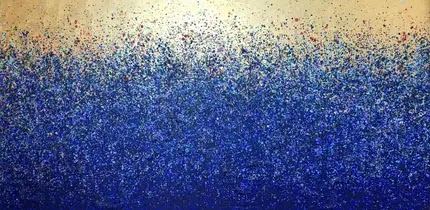26.12.19
17.12.19
Exhibitions

In general,
I don’t take pictures from different official art exhibitions, even if this is more
and more tolerated, allowed. Here are however a few samples from exhibitions I
have recently visited: Da Vinci (Louvre)…
… El Greco (Grand Palais)…
… and
Toulouse-Lautrec (Grand Palais).
I have visited a few more – without photos. Right now you can for example see
Bacon (Centre Pompidou), Degas (Musée d’Orsay), Le Douanier Rousseau (Musée
Maillol), Mondrian (Musée Marmottan Monet), Soulages (Centre Pompidou and
Louvre)…
A little
problem is the present local transport strike. Most of the metro lines are
closed, but there are a number of buses around… and you can of course bike, walk...
2.12.19
Christmas show windows again, again, again...

As each
year since I started this blog, it’s time to have a look at the Christmas show
windows, concentrating on the department stores the Printemps and the Galeries
Lafayette.
… and there
is of course the tree under the fantastic glass cupola of the Galeries
Lafayette, different each year.
The flowers we can see in the tree can be recognised in a large part of the Galeries Lafayette show window decorations.
A few of
the windows are just showing “things to buy”, of course beautifully presented.
This year
you will find all kinds of animals in the Printemps windows…
… whereas at the
Galeries Lafaytte there is a concentration on bees.
Labels:
Au Printemps,
Galeries Lafayette
25.11.19
"59 Rivoli"

“59 Rivoli”
stands for what may be considered as an “artistic squat”. It has been there
for some 20 years and has finally gotten some kind of official status, even
support from the City of Paris and some other institutions. When it was first "squatted" or illegally occupied,
the building, then belonging to a bank, had stood empty for years. As the name
of the place indicates, the address is 59, rue de Rivoli.
You are
welcome to visit the building, six floors full of active artists. The staircase
- with its surrounding walls - is already something to be seen - see also top picture.
Labels:
Paris 1
14.11.19
Place de la Bastille – Revolutions

The Place
de la Bastille is of course quite directly linked to the 1789 Revolution - the
destruction of the 14th century fortress, used as a prison, which was stormed
on July the 14th, 1789. I have written on the Place and the fortress
several times, e.g. here and here.
The Place
is now under reconstruction, meaning that cars and buses will have to take new
paths and that pedestrians will be more welcome. The work is not finished,
but you can already now reach the “July Column” on foot without risking your
life (which I once did), as was the case when it was still surrounded by hectic
traffic.
Some of the
floor slabs around the Column have figures referring to different French
Revolutions (there was not only the 1789-one)…
… and
different symbols, referring to the Square. The elephant actually stood here beginning in 1813, but only in plaster and in 1840 it was replaced by the “July Column”,
still there – using the same circular basin as its base. (The elephant stayed in place another six years.)
Maybe this is
a good reason to write a few words about these different Revolutions?
1789 may
not need any explanations. That is the Revolution we all know about, the one
which overthrew the monarchy (for a while), passed the “Declaration of the
Rights of Man and Citizen”, but also created the “Reign of Terror”, the guillotine…
The 1830
one, the second French Revolution, is often referred to as the “Trois Glorieuses”
(Three Glorious (days)). Yes, actually, it lasted only three days, July 27-29.
Charles X, who was the youngest brother to Louis XVI, had taken a number of
unpopular measures, known as the “July Ordinances”, involving the dissolution
of the Chamber of Deputies, the suspension of the liberty of the press… He
called for new elections, but the middle-class could not vote anymore. There were
some riots… and Charles X was forced to abdicate. He was replaced by Louis
Philippe. The House of Orléans took over from the House of Bourbon and some new
rules for the Monarchy, the “July Monarchy”, were established. The “July Column”
was ordered… and Eugène Delacroix made his most well-known painting, “Liberty
Leading the People”.
The “July
Monarchy” lasted until 1848, when it was time for the “February Revolution”. It
led to the overthrow of the King, Louis Philippe, and the creation of the
Second Republic. However, the government’s
very conservative politics led later that year to the unsuccessful “June Days Uprising”, creating 5.700
victims, and in December the same year led to the election of Louis
Napoleon Bonaparte (nephew of Napoleon I) as elected President of the Republic.
Four years later he suspended the elected assembly and established the Second
French Empire and became “Emperor of the French”, Napoleon III, the last French
Monarch (1852-1870). We can see the famous caricature (The Pear) of Louis
Philippe by Honoré Daumier, dated already 1831. 1848 was by the way a year of
upheavals all over Europe, with France beginning in February, tens of other
European countries followed with demands for democracy, freedom of the press…
So, we come
to the last Revolution (1968 doesn’t count?), in 1871, referred to as the “Paris
Commune”. The Franco-Prussian War in 1870 had led to the capture of the Emperor
Napoleon III and the creation of the Third French Republic. The armistice with
Prussia led to a disarmed Army, but the “National Guard” was there to keep
order. The “National Guard” was some kind of reserve force, based on “active
citizens”, including all “able-bodied citizens capable of carrying weapons”. The
government had left Paris for Versailles and the “National Guard” took over the
control of Paris, including most of the ministries. They came in conflict with
the government and the regular army. The “working class” was largely
represented and many socialist ideas were defended. They tried during their short
60-day “reign” to e.g. establish the separation of Church and State, the abolition
of child labour… In the beginning, the regular Army members had no wish to go
against them, but … finally, after a lot of barricades, fighting… the official
government forces took over. The last resisters were killed at the Père
Lachaise Cemetery (see previous post). The
figures vary, but, at least 10.000, maybe 20.000 people were killed between
March 18 and May 28, 1871.
Edouard Manet illustrated.
Edouard Manet illustrated.
Labels:
Paris 11,
Paris 12,
Paris 4,
Place de la Bastille
29.10.19
More open-air art...

I thought
that even if I’m not feeling the “obligation” anymore to post as regularly as
I used to… it was now about time to post something. What? I went out with my little
camera and... just around the corner from where I live, I found all this – a lot of
temporarily exhibited open-air artwork. We are on the Avenue George V. The
exhibition will be there until mid-November.
The top
picture and the ones below, a number of hyperrealist sculptures, are by an
artist called Carole A. Feuerman. There is one of a man in a swimsuit, named “The
Thinker”, obviously with a reference to another, famous, “Thinker”.
Another
artist is Marcos Marin, making use of optical illusions, probably some special
kind of “Op art”. There are a number of portraits of well-known personalities
and also reproductions of some famous sculptures to be found in Florence, Rio…
The angle from which you look at his artwork is of course of highest importance.
The photos
are by a photographer and video maker called Charlotte Mano. She also makes quite different photos, but all very “special”.
The last
artist represented is Laurence Jenkell. These “Candy Nations” are bonbons in
different national flag colours. They were originally exhibited at a “G20”
summit meeting in Cannes in 2011.
21.10.19
FIAC outdoors ... in the rain

FIAC stands
for “Foire Internationale d’Art Contemporain” (International Contemporary Art
Fair). It has been occurring on a yearly basis since 1974 and lasts only some three
days. The main exhibition takes of course place indoors, in the Grand Palais,
but there is also a lot to be seen in some temporary tents along the Champs
Elysées.
Part of the
“show” takes place outdoors - here first a few things which you could find
between the Grand and the Petit Palais.
So… I made
only the outdoor part this year. I didn’t look for “everything”… there should
have been things to be seen at the Place Vendôme, but… Well, of course it’s a
temporary exhibition.
I crossed the Place de la Concorde and then went into the Tuileries Gardens. It was raining…
You may recognise a few artists - César, Calder, Ungerer…
I found also this one, behind the Petit Palais, close to Koons’ Tulips (see previous post).
Obviously, it was not officially placed here - the word “Fiac” had been replaced…
Well, I
think that I was again, like each year, distracted, attracted by the beautiful
autumn leaves.
Subscribe to:
Posts (Atom)





























































